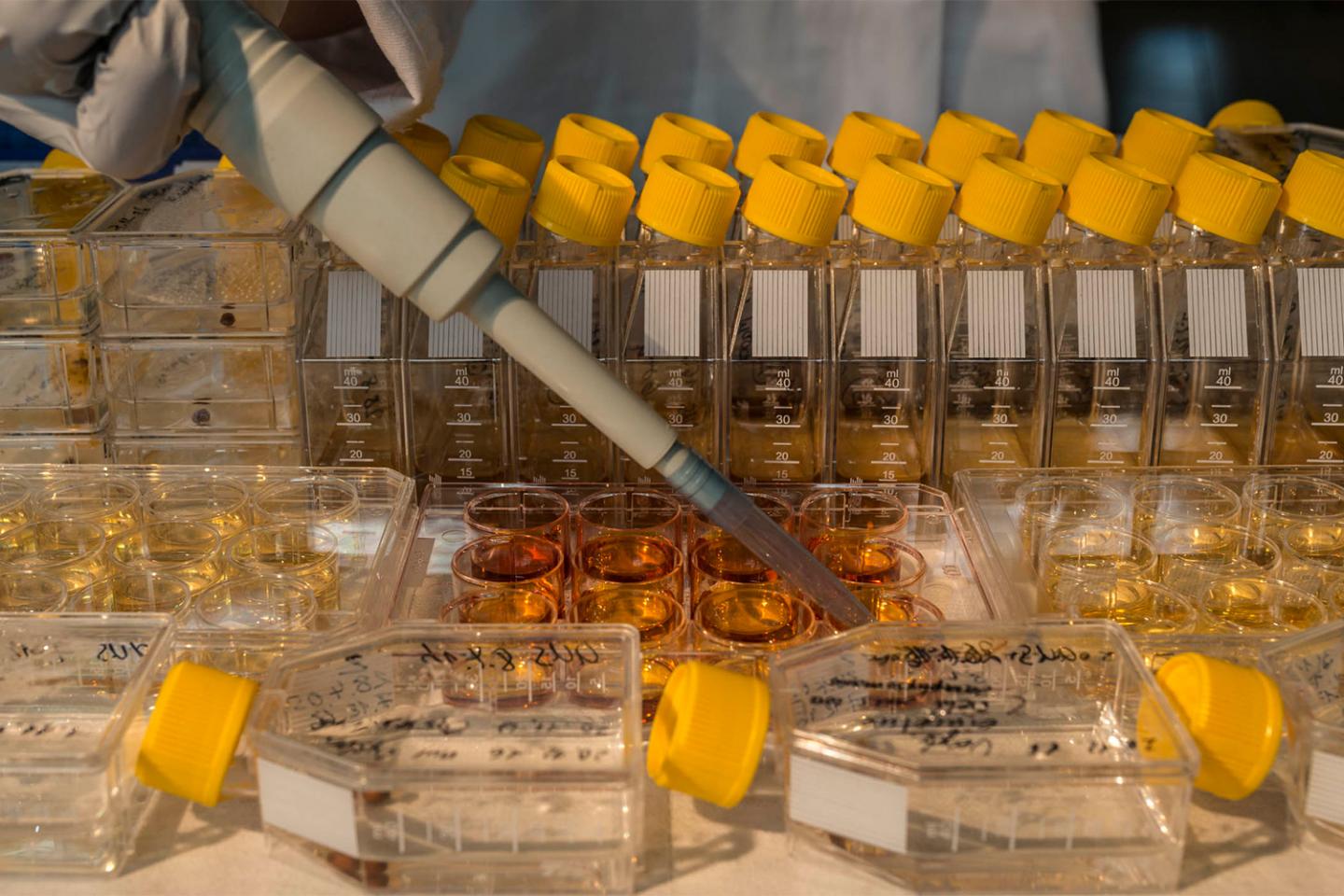
Credit: André Künzelmann/UFZ
A single disruptive factor rarely appears in isolation. Usually, a number of them, such as climatic extremes, environmental stress or the presence of pests, act together giving rise to complex changes in ecological systems. In scientific studies, however, individual disturbances and their effects on plants, animals or bacteria are often only considered in isolation. "Another problem is the 'or'. If, for example, only plants are investigated, both direct and indirect effects within the food web are neglected, when these could be very serious indeed," says Dr. Antonis Chatzinotas, environmental microbiologist at UFZ, who led the study.
To better understand the complex effects that disturbances have on ecological systems, the researchers have developed a simple ecosystem in the form of a microbial food web. The benefit of this is that microbes grow quickly, have short generation times, are easy to monitor, and disturbances are simple to simulate experimentally. The model ecosystem consisted of a culture medium (nutrients), four different strains of bacteria (prey) and a ciliate (predator) that feeds on bacteria. These mini-ecosystems were subjected to different disturbance events in various experimental arrangements. One disturbance took the form of different dilutions, which resulted in a reduction in the number of individuals. "The dilutions simulated disturbance events of different strengths that occurred either strongly and suddenly or steadily at low intensity," explains Canan Karakoç, UFZ doctoral candidate and lead author of the study. Another type of disturbance was shortage of food. Here, in one arrangement, the food supply for the bacteria was abruptly cut off, while in another it was reduced gradually. The researcher team then investigated what effects the type of disturbance had on the number of bacteria, and how and whether the bacteria communities changed as a result. This also involved examining the effect of the presence or absence of predators.
In experiments performed without predators, the bacteria were affected only mildly by the disturbances and the system recovered quickly following the disturbance events. By contrast, the model ecosystem with the ciliates present, responded sensitively to the disturbances. "At first, this led to a steep drop in the number of ciliates. As a result, the bacteria later benefited, as fewer predators meant reduced predation pressure. Having survived the disturbance, the bacteria numbers could also grow again quickly – even to greater numbers than previously," says Karakoç. The relative abundance within the bacterial community had also changed. Firstly, in particular those bacteria that either could manage with the small remaining amount of nutrients, or that are normally the preferred food of predators, grew well. "Translated into a natural ecosystem, a development of this kind could mean that, for example, pests will suddenly multiply after a disturbance, if they are not held in check by the predators," says Chatzinotas. "Such trophic interactions are immensely important for the functioning of an ecological system and should therefore be taken increasingly into account in future studies."
Not only the interactions within the food web are important, however: also important is the time factor. To determine which effects are long-term and which are short-term in nature, the researchers studied the various experimental procedures in the periods before, during and after the disturbance events in each case. This demonstrated that the numbers of bacteria restabilised quickly after the disturbance, whereas a change in the bacterial community was normally a long-term process. "Stability and recovery after disturbance events are also important topics," says Karakoç. "It is therefore essential to make these observations within the context of time series." In field studies, time series can only be realised with a high level of effort. Microbial systems have the advantage of being able to provide answers to ecological problems on a small scale, and relatively quickly. "The results of our study cannot, of course, be simply transferred on a one-to-one basis to real-life ecosystems," says Chatzinotas. "What they do show, however, is the complex way in which even the simplest ecosystems respond to disturbances, and they help to reveal fundamental mechanisms that should increasingly be taken into account against the background of global change in ecosystem research." In future studies, the researchers at UFZ will gradually increase the complexity of the ecosystem models and extend them in terms of the microbial services provided, such as the degradation of toxic substances.
###
Media Contact
Antonis Chatzinotas
[email protected]
49-341-235-1324
@ufz_de
http://www.ufz.de/
Original Source
http://www.ufz.de/index.php?en=36336&webc_pm=15/2018 http://dx.doi.org/10.1038/s41598-018-21219-x




